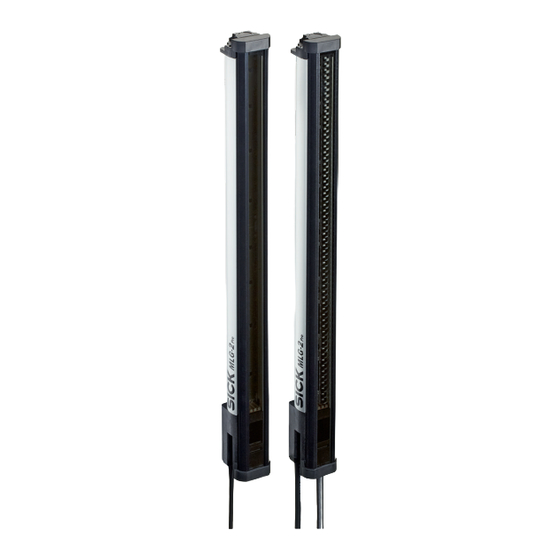
SICK MLG-2 Pro Manuals
Manuals and User Guides for SICK MLG-2 Pro. We have 1 SICK MLG-2 Pro manual available for free PDF download: Operating Instructions Manual
SICK MLG-2 Pro Operating Instructions Manual (138 pages)
Measuring automation light grid
Brand: SICK
|
Category: Measuring Instruments
|
Size: 15.05 MB
Table of Contents
-
-
-
Pro15
-
-
Teach-In17
-
-
Scan Time19
-
Interfaces28
-
Inputs33
-
4 Mounting
35 -
-
-
Preparation53
-
Wizards56
-
-
Diagnostics80
-
-
Zones85
-
Teach-In90
-
Simulation102
-
Start Simulation103
-
Beam Status104
-
-
Beam Functions107
-
-
-
8 IO-Link
110 -
9 Rs-485
112 -
10 Servicing
115 -
-
Data Sheet119
-
Diagrams122
-
-
15 Accessories
129 -
16 Annex
132
Advertisement
Advertisement
